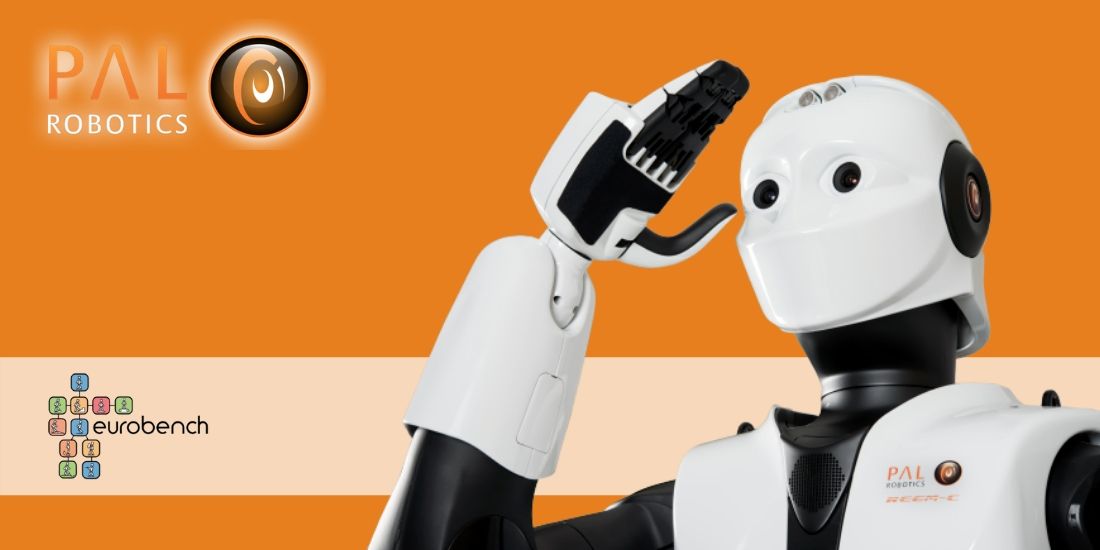The EUROBENCH project
As you may know, you can receive up to €160k for participating in the different calls of European H2020 project EUROBENCH. At the present moment, the second call is open and this will offer up to €60k to developers interested in using the EUROBENCH testing facilities and benchmarking software to evaluate bipedal robotics technologies.
We highly recommend that if you are interested in improving your chances of getting funded, to register as it is a fast (10-minute) process that will provide you with 3 main benefits:
- Receiving immediate feedback on your idea.
- Receiving personalized support in proposal preparation.
- Acquiring priority in the evaluation of your full proposal.
To pre-register, fill in the online form. The open call starts on 1 September 2020.
The deadline for submission is 1 December 2020. More information is available.
If you are curious to learn more visit the EUROBENCH website.
Within the EUROBENCH project, you are also able to get first-hand experience and use of a REEM-C platform.
PAL Robotics is a key partner of the H2020 European project EUROBENCH, an ambitious project which aims to create the first benchmarking framework for robotic systems in Europe.
Human-centred robots such as prostheses, exoskeletons and humanoids, are becoming more and more important worldwide and many are now progressing to everyday use, across many fields. There are, however, issues in this process – in particular, issues connected to a lack of performance and safety indicators for devices to meet international certifications and safety standards.
In robotics in general, reproducing results from scientific publications is very difficult, as the experimental protocols and methods are not specified in enough detail for others to carry out the same tests in the same way. In addition, with biped robots, current benchmarking approaches are often focused on goal-level performance indicators.
The benchmarking framework EUROBENCH is creating aims to tackle some of these issues. The framework will also help in production of robots as it will allow researchers and organisations to test the performance of robots at any stage of development.
EUROBENCH benchmarking facilities and software
EUROBENCH offers interested developers and end-users opportunities in using their testing facilities and benchmarking software. This consists of:
- Two benchmarking facilities: one for wearable robots (including exoskeletons and prostheses) and the other for humanoid robots, to allow companies and/or researchers to perform standardized tests on advanced robotic prototypes.
This includes a methodological framework, an interactive application, an automatic scoring system, a database, and a decisional support system.
- A unified benchmarking software: which will allow researchers, developers and end-users worldwide to design and run the tests in their own laboratory settings.
This includes providing supporting certification and standardization entities with state-of-the-art test benches.
Use case scenarios in the EUROBENCH project so far have included prosthetics, humanoids, exoskeletons and innovative sensing systems.
PAL Robotics’ role in EUROBENCH
REEM-C is the core element of this project, and we aim to promote this ROS open-source biped humanoid robot as the reference platform for legged locomotion, for all the European research centers.
At PAL Robotics we have manufactured a stronger and more robust adapted version of our humanoid biped robot, REEM-C, to be the standard robotics platform for users to validate their own software at EUROBENCH’s testing facilities. This REEM-C includes an RGBD camera and an updated cooling system, as well as higher performance motors in the robot’s legs.
The aim is for testers that develop humanoid robotics applications to have a way to validate their own code and test it on a real platform. The testing facilities offer a public space complete with different types of equipment with a number of sensors.
REEM-C: European biped humanoid research robot

At PAL Robotics we strive to create service robots that are useful for the real world, and platforms that make a difference in any robotics research. REEM-C is the result of many years’ experience in biped robot research. At 165 cm high, this robot is a robust research platform that can be used to implement and test algorithms. REEM-C’s modular hardware and software architecture can be easily adapted to meet customer-specific requirements.
REEM-C is a fully ROS based, biped humanoid robot that has been designed to be a research platform for Artificial Intelligence (AI), Machine Learning (ML), Human-Robot Interaction (HRI), manipulation, perception, motion planning, and trajectory optimization. REEM-C is capable of performing a range of human functions such as sitting, grasping and climbing stairs. The robot has been used in research projects including Factory of the Future, Smart Cities and IoT and Ambient Assisted Living.
Some of the scientific work and research papers published using REEM-C include: ‘Enhancing Biped Locomotion on Unknown Terrain Using Tactile Feedback’ which won the best oral paper award in Humanoids 2018 and “A Comprehensive Realization of Robot Skin: Sensors, Sensing, Control, and Applications”, as well as the ROSIN project, OpenWalker.
Our public simulation for REEM-C is also available for free. Watch REEM-C in action demonstrating full body control in this video.
REEM-C has also participated in other EU projects, including ROS OpenWalker, INBOTS, Factory in a Day, and SocSMCs. The goals of these projects included developing an ecosystem essential to advance robotics, improving the competitiveness of European manufacturing, and investigating human behavior and its cognitive system to improve Human-Human and Human-Robot interactions.
In addition to the EUROBENCH project, PAL Robotics works on many EU-funded projects. We are always on the lookout for new potential partners, to find out more about EU-funded projects or REEM-C, visit our collaborative projects webpage and don’t hesitate to get in touch with us.
Keep in tune by reading our blog on robotics and research!
